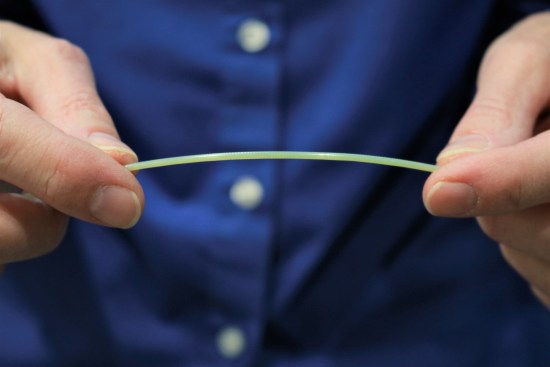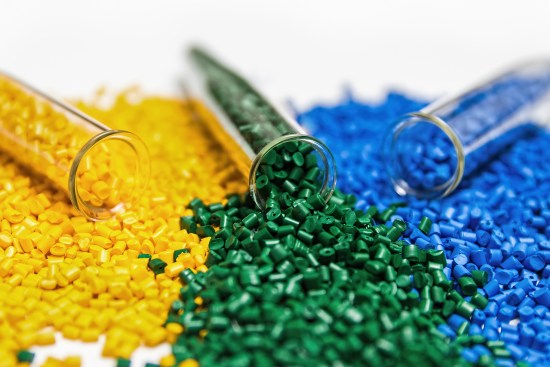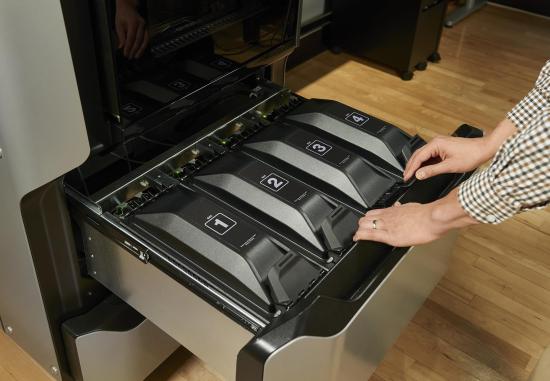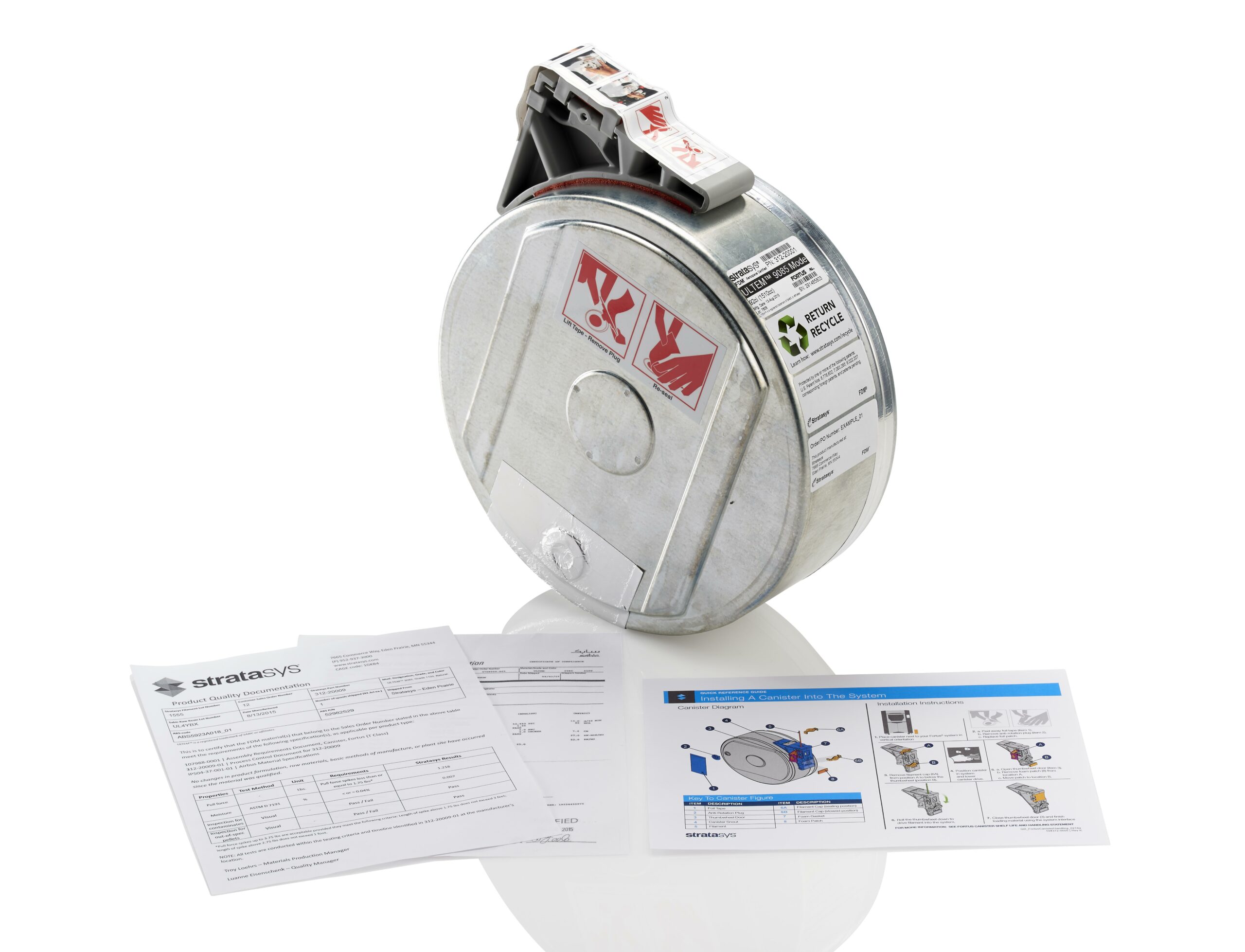In 1925, when the automotive industry was rapidly growing in response to consumer and industrial needs, a group of independent auto parts resellers joined to form the National Automotive Parts Association (NAPA). A founding member was the Genuine Parts Company; this group later acquired a number of other NAPA stores and gave rise to ad campaigns stressing the importance of buying genuine auto parts from a well-known, trusted source.

Following that same philosophy is a good idea for users involved with industrial 3D printing (additive manufacturing/AM). How do you know your part will print consistently, and display measureable, repeatable material properties, if you can’t rely on the consistency of the AM material’s own production?
At PADT, we print the gamut of filament options on our Stratasys industrial 3D printers, from ABS and TPU to production-grade Nylons and certified Ultem ® . As both an authorized AM system reseller and service provider, we count on the quality of the materials we source for ourselves and our customers, so it’s enlightening to get a behind-the-scenes look at the Stratasys filament production-process.
Ingredients Matter
Great recipes start with the finest ingredients, right? It’s no different when you’re producing filament for demanding applications: start with qualified raw materials from reputable sources. Standard Stratasys filament (like ASA and ABS), Engineering Grade materials (including polycarbonate and Nylon 12) and most Support materials are made in Israel at one of the two Stratasys corporate offices, while the High Performance materials such as Nylon 12 Carbon-Fiber (CF), Antero and Ultem ® products are produced at the original Minnesota location.

Stratasys buys polymers in pellet form from chemical suppliers such as France-based Arkema, who blends the proprietary polyethyl ketone ketone (PEKK) base formula for Antero and Antero ESD materials, and SABIC who supplies the raw pellets for Ultem ® -based filaments.
Some pellets are fed directly into the filament production equipment while others are compounded like a custom pharmaceutical: mixed and blended with stabilizers and colorants, extruded as interim-stage filament, cooled and then granulated all over again into new pellet stock. (Given that FDM is an extrusion-based technology, one of the seven standard AM technologies defined by ISO/ASTM52900-15, it’s interesting that extrusion plays a key role in the material production-process itself.)
Polymer Pasta
Whether you’ve made your own fresh pasta or just watched a child crank out endless strings of PlayDoh, you can envision the next steps in filament production, starting with melting the pellets into a viscous liquid resin. Chaffee Tran, Stratasys’ Materials Product Director, explains, “Resin is (then) run through a screw extruder and forced through a die (metal perforated with precision holes), cooled as it comes out, and wound onto spools.” An optical monitor continuously checks for “ovality” of the filament as it moves past, and triggers a stop for anything out-of-round beyond tolerance. If you’ve ever struggled with a printer that jammed because of inconsistent filament diameters, you’ll understand the importance of this process requirement.

Filament for the Stratasys F123 plug-and-play series of printers is packaged on-site as bagged or boxed spools. Filament for the industrial printers such as the F380cf, F450 and F900 gets loaded into sealed canisters that hold larger volumes in both standard and extended capacity. For all filament types, Tran says, “We have full traceability of our finished products via serial number and manufacturing lots. This can be traced back to production documents, to link back to the production-line settings and batch lots of resin used.”

One Step Beyond: Certification
For truly demanding applications, the quality process gets kicked up another notch. Ultem ® 9085 Aerospace and Ultem ® 1010 Certified Grade (CG) are shipped with Certificates of Compliance that confirm the production parameters down to the exact machine type and location where the filament is manufactured. “Certified Ultem ® has a higher sampling rate of finished goods for various filament properties and tighter internal specification,” adds Tran.
This tightly regulated process allows Stratasys to be the only AM company offering material certified by the Aircraft Interior Solution (AIS), a process – developed in collaboration with the National Center for Advanced Materials Performance (NCAMP) – that provides the necessary tools, documentation, and training needed to guide aerospace producers down the aircraft qualification process. In order to meet the requirements aerospace manufacturers face, their parts must not only be made from the AIS certified version of the Stratasys Ultem ® 9085 material, but must also be printed on a certified F900mc Gen II system, in accordance with a string of aerospace standards documents. (For more information see details provided by NCAMP.) That’s what you call Quality Control.
For historical details about the development of standards for qualifying non-metallic materials for aircraft applications, now including the first polymer AM material, download this nine-page document, A Path to Certification:

Even if your part production process is not as stringent as that demanded for the AIS program, you’ll avoid jammed drive-gears and cross-wound spools and get consistent part performance when your Stratasys printers run “genuine Stratasys” filament. Classic ABS, chemically resistant Antero, flexible TPU and new, fine-finish Diran are just some of the materials that will offer you repeatable results. Ask us for more details, and stay tuned as Stratasys launches even more options for true industrial applications.
PADT Inc. is a globally recognized provider of Numerical Simulation, Product Development and 3D Printing products and services. For more information on Stratasys printers and filaments, contact us at info@padtinc.com.


















